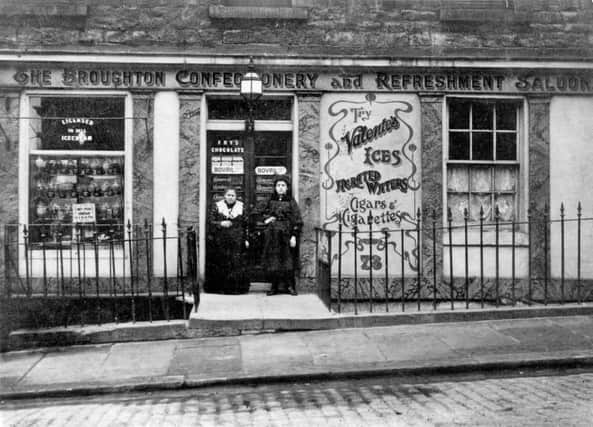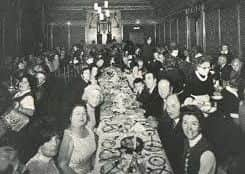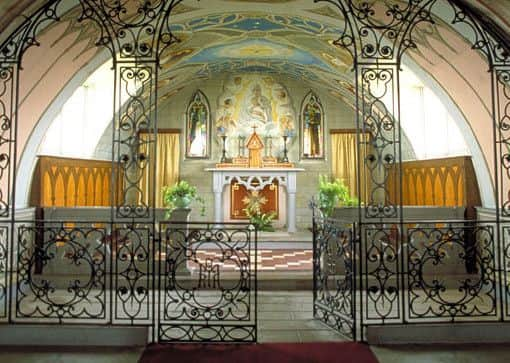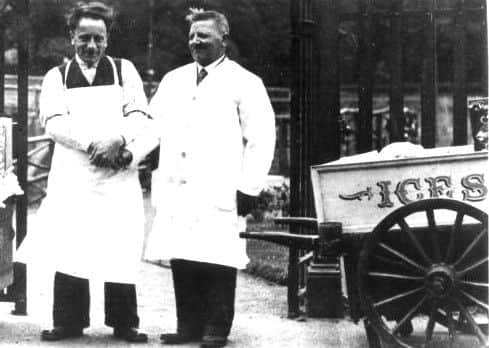What impact have Scots-Italians had on Scotland?


The Italo-Scots community is experiencing its biggest increase in numbers in 100 years, it has been claimed.
A new professional class of immigrants are joining young people forced from their homeland to look for work.
Advertisement
Hide AdAdvertisement
Hide AdThe high unemployment rate in southern regions of Italy is driving the new arrivals with a new cohort of educated professionals also understood to be making Scotland their home.


Scotland has long enjoyed an affiliation with Italians since the first immigrants arrived in the late 1800s.
It is estimated there are tens of thousands of Scots of Italian heritage, including high profile figures such as singer Paolo Nutini, violinist Nicola Benedetti and comedian and writer Armando Iannucci.
Although the numbers of new arrivals in Scotland is currently hard to quantify, it is known that net migration from Italy to the UK was up 94,000 last year to 333,000.


Ronnie Convery, secretary of the Italian Scotland charitable organisation and director of communications at the Archdiocese of Glasgow, said a completely new dimension was being added to the community.
He said: “There has been a brand new migration over the past two years, and the biggest one we have seen in 100 years.
“There has been a huge growth in Italian citizens in Scotland.


Advertisement
Hide AdAdvertisement
Hide Ad“One thing that makes it similar to the first phase of immigration from Italian is that large numbers are fleeing due to lack of opportunity.”
Mr Convery said Italy had made slower progress in recovering from recession and that youth unemployment stood at around 60 per cent in some poorer parts of the south.
He said that most people arriving in Scotland had come from Puglia, Campagne, Calabria and Sicily.
“What we are finding are a couple of different groups. They largest is typically young, in their early twenties who have been pushed by desperation. They have come to try and earn some money. Language is a problem in many cases.


“There is also this second, highly educated group, who are slightly older, sometimes with dependents who are choosing to move to Scotland.
“They are working as academics at universities or as doctors within the NHS. This is a completely new group of Italo-Scots.”
Latest available figures from the 2011 Census show there were 6,048 people born in Italy living in Scotland. This was up from 4,936 in 2001 and 3,947 recorded in 1991.
Advertisement
Hide AdAdvertisement
Hide AdThe UK-wide figures from Office for National Statistics, recorded in the last quarter of 2015, showed that 57,600 Italians were allocated a national insurance number – up 37 per cent on the year before.
Mr Convery said that London was now the city with fifth highest number of Italian speakers after Rome, Milan, Naples and Turin.
He added: “There is a huge migration from Italy to London and some of those who have come to Scotland said they didn’t want to get clogged up in that, they wanted to try something different.


“Italians also have a very romantic view of Scotland.
“Those who have come here recently tend to be extremely positive about the welcome they have received. Many feared they would not be liked, that people would think they were mafioso, but it has turned out to be very positive for them.”
The first Italian immigrants arrived in Scotland in the 1890s. In the early days, many found work selling Catholic statues in the growing Catholic communities across the country.
By 1914, the Italians dominated the café trade in the West of Scotland – and were at the forefront of popularising the fish supper.
However, WWII was a dark chapter for those Italians who had made Scotland home.
Advertisement
Hide AdAdvertisement
Hide AdA census of Scots Italians in the 1930s recently emerged during a clear out of the Italian Consulate in Edinburgh.
The “Censimento”, ordered by Mussolini’s government 1933-1940 details 1,400 households of those originally from Italy.
Soon after the census was taken, the Italian community was subjected to serious abuse and violent rioting when Mussolini declared war on Britain in June 1940.
The Italian community in Scotland faced internment and deportation.
Hundreds of interned Italian men died when the ship they were on, the Arandora Star, was torpedoed by a German U-boat on 2 July 1940 as it transported the prisoners of war to Canada.
They were mainly harmless cafe owners, shopkeepers and young shop workers who had no allegiance whatsoever to the dictator.
After the sinking, the British Government agreed to build prisoner of war camps in Britain, with one on Orkney. There prisoners built the Italian Chapel at Lamb Holm, which is still admired today for its craftmanship. Scottish heritage: for stories on Scotland’s people, places and past >>